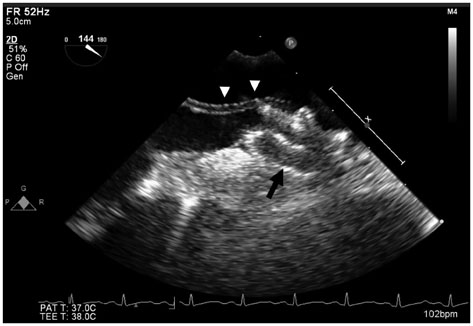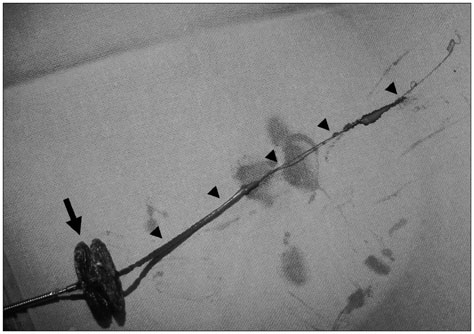J Cardiovasc Ultrasound.
2015 Sep;23(3):193-194. 10.4250/jcu.2015.23.3.193.
What Did Happen during the Device Closure of the Patent Foramen Ovale?
- Affiliations
-
- 1Division of Cardiology, Department of Internal Medicine, Chungnam National University Hospital, School of Medicine, Chungnam National University, Daejeon, Korea. jaehpark@cnu.ac.kr
- 2Department of Neurology, Chungnam National University Hospital, School of Medicine, Chungnam National University, Daejeon, Korea.
- 3Department of Cardiovascular Surgery, Chungnam National University Hospital, School of Medicine, Chungnam National University, Daejeon, Korea.
- KMID: 2068732
- DOI: http://doi.org/10.4250/jcu.2015.23.3.193
Abstract
- No abstract available.
Keyword
MeSH Terms
Figure
Reference
-
1. Wolfrum M, Froehlich GM, Knapp G, Casaubon LK, DiNicolantonio JJ, Lansky AJ, Meier P. Stroke prevention by percutaneous closure of patent foramen ovale: a systematic review and meta-analysis. Heart. 2014; 100:389–395.2. Bruch L, Parsi A, Grad MO, Rux S, Burmeister T, Krebs H, Kleber FX. Transcatheter closure of interatrial communications for secondary prevention of paradoxical embolism: single-center experience. Circulation. 2002; 105:2845–2848.
- Full Text Links
- Actions
-
Cited
- CITED
-
- Close
- Share
- Similar articles
-
- Transcatheter Closure of Patent Foramen Ovale in a Stroke Patient under the Guidance of Transesophageal Echocardiography
- CT Diagnosis of Paradoxical Embolism via a Patent Foramen Ovale in a Patient with a Pulmonary Embolism and Prominent Eustachian Valve
- Patent Foramen Ovale and Cryptogenic Stroke
- A New Method for Patent Foramen Ovale Closure: Delivering Sheath Over Coronary Sinus Catheter into Left Atrium
- Patent Foramen Ovale and Stroke-Current Status



